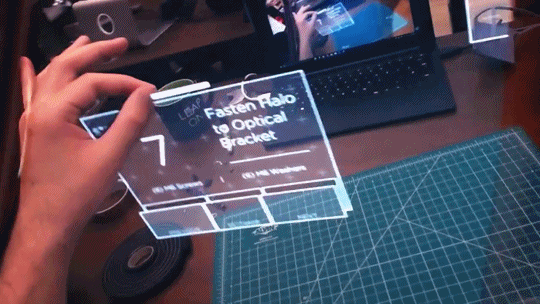AR Long Before VR

Why the World will Coddle Augmentation Before We Fully Embrace Virtual Reality
When I think about technology today, I keep returning to a simple image: two worlds brushing against each other. One is the world we touch, filled with sound and weight and air. The other is the one we build; made of light, code, and imagination.
Virtual Reality asks us to step entirely into that second world.
Augmented Reality knocks on ours, asking to be invited in.
We often treat these technologies as siblings born of the same ambition. But they differ in temperament. VR wants to transport us somewhere new; AR wants to deepen where we already stand. One replaces presence. The other refines it.
Scalability, Flexibility and Multi-Tasking
The promise of Augmented Reality lies not in escape, but in overlay, as a way of seeing more without leaving what is. A surgeon glances at floating vitals above the body she’s repairing. A student lifts a tablet to see invisible molecules suspended in air. A traveler walks through Rome as ancient columns rebuild themselves in ghostly light.
These are not scenes from fiction. They are glimpses of coexistence.
Virtual Reality, in contrast, closes the door to the physical. To enter, you must leave. It is immersive, but also isolating; a full surrender of the senses that rarely fits the rhythm of everyday life. AR feels gentler, more porous. It asks less of your attention and gives more back to your awareness.
Perhaps that is why it feels more human. We are, by nature, creatures of overlap, living between thought and touch, memory and imagination. AR doesn’t fight that tendency. It mirrors it.
Natural Integration: Transcending Time and Space
Technology often moves faster than our readiness to use it.
When Google Glass appeared in 2014, it looked like a window into tomorrow. It vanished almost as quickly. Maybe it wasn’t the technology that failed, but the timing. People weren’t ready to carry a camera on their faces, or to merge conversation and computation in the same glance.
But time has a quiet way of preparing us. A decade later, the world feels closer to that vision. The Apple Vision Pro has begun weaving AR and VR into a single thread, what they now call “mixed reality.” The idea is not new, only refined. We keep returning to this dream of merging worlds, making it smaller, more wearable, more invisible. It’s less about invention now, more about belonging- how technology can slip into life without demanding to be noticed.
The Google Glass was one of the best attempts in recent years to have pushed the envelope of Augmentation, before it decided to shut down this huge project, much like the death of its many other hyped projects like Google Shopping, Checkout and Reader. (PS: check out https://killedbygoogle.com/ to see the hundreds of projects killed by Google). I guess the Google Glass was so far ahead of its time, it launched back in 2014, got pulled in 2015, relaunched in 2019 and is due to be removed again in the coming months.
Overlapping vs. Replacing
The beauty of AR lies in its restraint. It doesn’t ask for our full surrender, only our curiosity.
You can stand in a museum, stare at an artifact, and see its story come alive; not as distraction, but as extension. The object remains real, but its meaning grows. That quiet cooperation between worlds feels more sustainable than substitution.
VR, for all its brilliance, asks too much solitude. It replaces the air, the sound, the subtle exchange between people in the same room. AR builds upon it instead. It doesn’t close your eyes; it teaches you to see differently.
If the future of connection lies anywhere, it might be here; not in total immersion, but in gentle integration. Friends walking together through a park, their shared space threaded with digital possibilities. Collaboration that doesn’t remove presence, but redefines it.
I foresee a world where friends can simulate multiple environments as they explore and traverse both the physical and digital landscapes together (I refuse to use the term ‘phygital’), as they crave more in-person connection over online-gaming with 3D virtual avatars.
The Future of Immersive Technologies
Every leap in technology begins with a promise and ends with a realization: what matters most is not capability, but compatibility.
AR will likely thrive not because it dazzles us, but because it fits. It can stand beside our lives without asking us to leave them behind. It feels less like invention, more like evolution; the next quiet layer in how we look, learn, and remember.
Virtual Reality will have its time. But before we learn to live entirely in imagined worlds, we’ll first learn to see our own more deeply.
Maybe that’s always been the point. The tools we build mirror what we long for, not escape, but expansion; not simulation, but understanding. AR just happens to speak that language a little more fluently.
*Update: As of 2024, The Apple Vision Pro combines both augmented reality (AR) and virtual reality (VR), as a ‘mixed-reality’ headset. Things are getting really innovative, and as we progress I reckon we would see more smaller, compact devices that will be released (perhaps from Google too) that can actually rival the Google Glass in time to come.
**Update, Sep 2025: Meta's latest Ray-Ban collaboration brings us a step closer to AR glasses becoming a commonplace in our lives.
